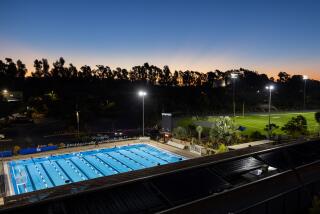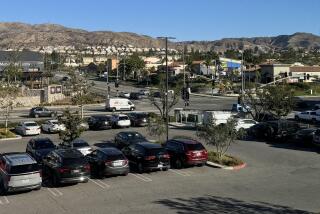Belmont: Start Anew
- Share via
When Los Angeles Unified School District Supt. Roy Romer announced Wednesday that the already problem-plagued Belmont Learning Complex sits atop an earthquake fault of unknown danger, reaction split predictably. One side jeered, “I told you so.” The other cried “betrayal.” It will be hard to make a sensible decision amid the din.
The school board voted to mothball the project two years ago after discovering that the site lay on part of an old oil field that leaked toxic hydrogen sulfide gas and explosive methane gas. The $175-million structure became a symbol of LAUSD incompetence: The district had not done adequate environmental tests when the site was purchased.
But what is a white elephant to some is a symbol of bad faith to residents of the inner-city neighborhoods that the school was intended to serve. The old Belmont High School, built to accommodate 3,300 students, today overflows with more than 5,000, and an additional 2,400 are bused to schools outside the neighborhood. Many parents reject the distinction that although much of downtown is built over the same oil field and quake zone, California sets higher safety standards for schools than for other buildings. After all, they put their children on buses -- and at risk of traffic accidents -- for hours a day.
Romer, who once promised to make the school safe, now acknowledges that he cannot, as it is presently configured. Mitigating the buildup of gases was challenge enough without the earthquake fault. At least two buildings must not be used for a school for reasons of state law and because no one should have to shoulder that kind of risk for a school full of children.
Romer should also rule out the first of three options he has suggested, which is to tear down the buildings directly straddling the fault but use the rest of the complex. It doesn’t make sense to spend so much money seismically retrofitting and extensively reconfiguring those buildings when it would be less expensive to start from scratch on another part of the site.
The second option calls for just that, building a smaller school on a 12-acre portion of the site that geologists deemed free of earthquake faults.
The third option is to search for another site.
Romer promised the school board a quick report on the options. It also should be thorough. No one wants more surprises after construction gets underway.
The district needs to put behind it the tattered, half-finished buildings that squat on the site, signaling failure. They may find another use. They might be sold; they might even be torn down.
By building anew, either on the 12 acres at the Belmont site or elsewhere, the district would get rid of its personal albatross. By focusing its considerable resources on this job before others, it would finally keep its promise to a neglected community.
More to Read
Sign up for Essential California
The most important California stories and recommendations in your inbox every morning.
You may occasionally receive promotional content from the Los Angeles Times.













